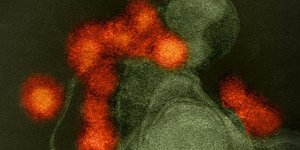| News / Science News |
Electronic device implanted in the brain could stop seizures
The researchers, from the University of Cambridge, the École Nationale Supérieure des Mines and INSERM in France, implanted the device into the brains of mice, and when the first signals of a seizure were detected, delivered a native brain chemical which stopped the seizure from progressing. The results could also be applied to other conditions including brain tumours and Parkinson’s disease.
The work represents another advance in the development of soft, flexible electronics that interface well with human tissue. These thin, organic films do minimal damage in the brain, and their electrical properties are well-suited for these types of applications.
While there are many different types of seizures, in most patients with epilepsy, neurons in the brain start firing and signal to neighbouring neurons to fire as well, in a snowball effect that can affect consciousness or motor control.
Epilepsy is most commonly treated with anti-epileptic drugs, but these drugs often have serious side effects and they do not prevent seizures in three out of 10 patients.
In the current work, the researchers used a neurotransmitter which acts as the ‘brake’ at the source of the seizure, essentially signalling to the neurons to stop firing and end the seizure.
The drug is delivered to the affected region of the brain by a neural probe incorporating a tiny ion pump and electrodes to monitor neural activity.
When the neural signal of a seizure is detected by the electrodes, the ion pump is activated, creating an electric field that moves the drug across an ion exchange membrane and out of the device, a process known as electrophoresis. The amount of drug can be controlled by tuning the strength of the electric field.
In addition to being able to control exactly when and how much drug is delivered, what is special about this approach is that the drugs come out of the device without any solvent. This prevents damage to the surrounding tissue and allows the drugs to interact with the cells immediately outside the device.
The researchers found that seizures could be prevented with relatively small doses of drug representing less than 1% of the total amount of drug loaded into the device. This means the device should be able to operate for extended periods without needing to be refilled.
They also found evidence that the delivered drug, which was in fact a neurotransmitter that is native to the body, was taken up by natural processes in the brain within minutes which should help reduce side effects from the treatment.
YOU MAY ALSO LIKE



